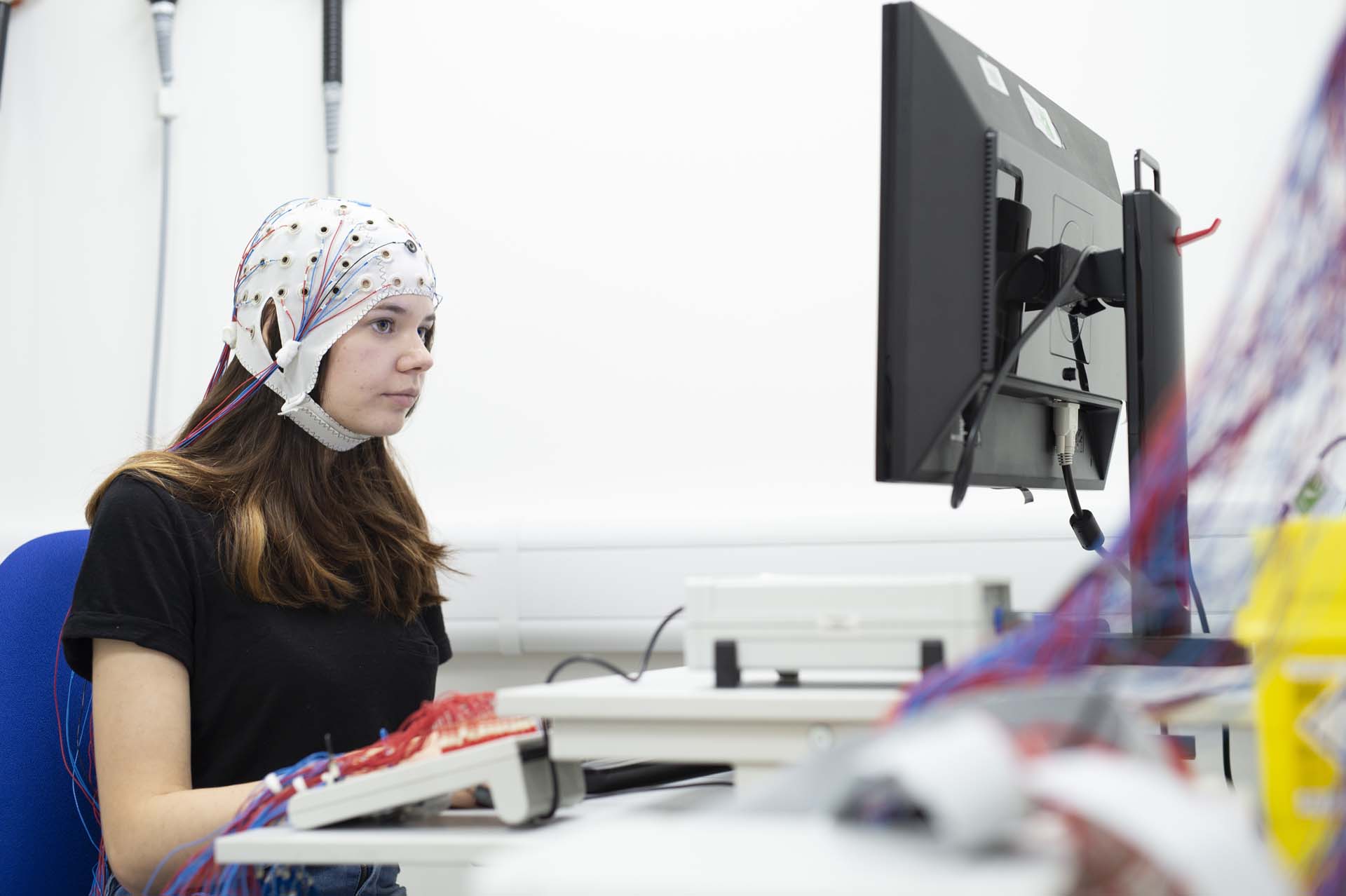About our research methods
Asking your opinion
Many of our studies will simply ask you to tell us a bit about yourself, tell us your opinions and preferences, or make decisions about things that you see or hear.
These studies might use interviews or pen-and-paper questionnaires where you answer some simple questions, or might take the form of a computer-based task where you see images/hear sounds and make responses using the keyboard about your experience.
Eye-tracking
Some of our studies use eye-tracking technologies (a small video camera that can record where you are looking) to see how quickly and easily you can find certain objects in a picture.
The School of Psychology has six state-of-the-art eye-tracking labs, including totally unobtrusive trackers (hidden into the computer monitor) that are perfect to test children, trackers that give us super-fast information on where you are looking on a computer screen or in real life, and even trackers that record your eye movements in a fully immersive virtual world.
![]()
EEG recording (brain waves)
In other studies, we use special equipment to record your brain waves (this is called EEG – a totally safe and easy way to watch your brain activity – we can even give you a picture!). EEG requires you to wear a special hat with wires attached to it.
To prepare you for the study, we will first squeeze a little bit of gel into the cap – this helps improve the signal that we see. The School of Psychology has two dedicated EEG labs.

Therapy, training and treatments
Finally, some of our research focuses on the use of therapy, training and treatments for people with ASD and learning disabilities.
These tools usually involve one-to-one or group-based discussions with a trained Clinical Psychologist who aims to help people understand and cope with their day-to-day experiences, and to learn new techniques for coping. Some of the methods we use include mindfulness therapy and Cognitive Behavioural Therapy (CBT).
Play based methods and touchscreens
Some studies with younger children may involve play based research methods. This may involve tasks such as choosing between two toys to play with, or interacting with the researcher in a play situation. Another method that we use, particularly with younger children with ASD, is the use of touchscreens to make choices or express opinions.